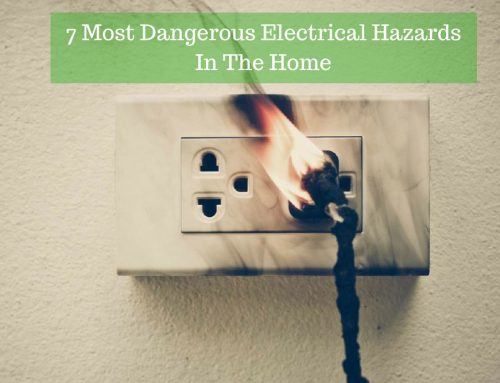Solar (Photovoltaic) installations in Australia have been gaining popularity over the last few years. As of 2019, solar installations in Australia surpassed 2.2 million with over 13.9 gigawatts of combined generated capacity. With electricity costs continuing to rise, it might be time to consider taking your first steps towards investing in solar powered electricity generation.
You’re probably asking yourself. Is solar installation right for me? How many panels do I need? Am I eligible to receive Government assistance? Our solar installation guide will shed some light (forgive the pun) on these questions.
What is a Solar Power System?
A solar power system can be used to generate energy for household or business needs. Each photovoltaic system, regardless of its size, consists of several key components:
- The solar panels
- An inverter: a device that converts the DC inverted electricity that solar panels generate into AC micro inverter electricity
- Batteries for energy storage
- Electrical connections between the solar panels and the other elements
- An electrical meter
- Overcurrent and surge protection devices
How Many Solar Panels Do I need in an Installation?
The number of solar panels needed depend on the specific goal of the installation, the size of the property that has to be powered and the average power consumption of the household. There are many online calculators you can use to determine the size of your solar power installation.
Here’s a very simplistic calculation you can use as an example. If you decide on a 5kW system using 330 W panels. You would need 15 panels to completely cover the family’s electricity needs.
E.g. 5kW / 330W x 1000 = 15
When you get in touch with a Solar installation company and share your location, usage cost information, electricity spend per year you’ll be provided with a more accurate estimate of the number of photovoltaic panels that you’ll need to acquire.
How Much Do Solar Installations Cost?
The next big thing to consider is the cost of the installation and whether solar power rebates are available.
According to recent estimates, the average cost of a 5kW system is 5,100 dollars in Brisbane. However, some suppliers may charge more due to the quality of their product or type of equipment they provide. For example, DC inverter systems aka micro inverters are typically $1,500 or $2,000 more expensive. This is because they are safer, more efficient and better for monitoring.
Depending on the size of the system and the location your in , it would take anywhere between four and seven years for the solar panels in Brisbane to pay themselves off. After that you can begin making serious savings. This is another major factor to consider when planning the switch to solar panels.
In addition, there are two categories of incentives for Australian homeowners and businesses who want to get a brand new solar system:
- Small-scale technology certificates (STCs): provided under the Solar Credits Scheme, this stimulus is available to eligible households. Formerly known as renewable energy certificates (RECs), STCs allow homeowners to cash in the certificates they could be earning over the coming 11 years.
- Feed-in tariffs (FiTs): the rate that a green electricity producer will be paid for the electricity that they’ve generated via a PV installation. Since this feed-in rate isn’t as high as your power consumption rate, it’s best to power your own property via a solar installation before returning electricity back to the national grid.
Keep in mind that to qualify for solar power rebates, you have to make sure that all photovoltaic panels and inverters in your system meet the Australian Standards and they are also on the Clean Energy Council approved list.
If you are specifically interested in Queensland rebates and financial assistance schemes, here are the options for you. The Queensland Government website has a lot of practical information including …
- Interest-free loans
- Grants that can be accessed after the installation has been completed
- Loans and grants for solar systems/battery systems or both
Buying the Best Solar Panels for Your System
Now that you understand the basics, let’s look at more specific aspects of getting started with your brand new photovoltaic installation.
There are several essentials you’ll need to consider in order to get the right equipment for green energy production from the sun:
- Make sure you know exactly how much energy you’re currently using so that you can choose the right number of PV panels and the right capacity
- You will also need to decide where the panels are going to be positioned. If they will be installed on a roof, there should be nothing standing as an obstruction between them and the sun (trees, other buildings). It’s also important to understand that east-positioned panels will give you optimal output in the morning, while west positioned panels will have their biggest output for the day in the evening
- Make sure that your solar panels of preference meet all requirements and standards that will qualify you for a rebate
- Check out for installation conditions, standards and warranty
There are four main types of solar panels on the market right now – mono and poly/multicrystalline, interdigitated back contact solar cells, thin film and bifacial panels. Most of the panels used in residential installations are mono and multicrystalline. The main differences between the varieties include rated power output, warranties and price. Do compare these and ask questions before opting for one kind or another.
How to Choose the Right Solar Installation Company
Buying high quality components is vital but it’s even more important to partner up with installation professionals who have the experience and the knowledge to ensure the optimal performance of your brand new system.
5 Things You Should Look For In A Solar Installer
When looking for the right solar installer, pay attention to the following qualities and qualifications:
- They should be properly certified and licensed with the Clean Energy Council
- They should have been operating for a number of years, maintaining an excellent reputation
- They should have experience and specialised knowledge across various kinds of installations
- Their solar brands, packages and terms and conditions should be competitive and fair
- Communication style is also very important. You need a service provider who can understand your needs and deliver a solution on the basis of that information
Final Verdict
Once you get acquainted with the basic terminology, choosing the right solar system package and the best solar installation team will be a breeze. Take your time and refrain from rushing the process. Make sure every decision is the right one for your needs and will contribute to a significant return on investment.






